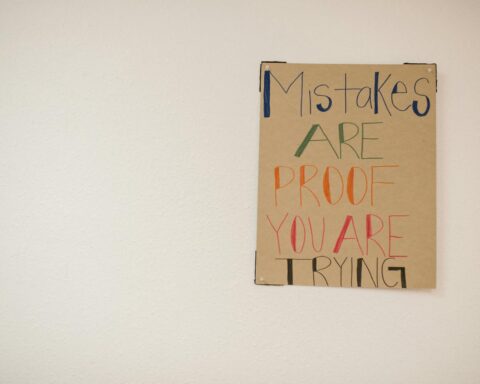Oftentimes, when thinking of emotional health and attunement, we think of becoming aware of the emotions that we experience and the effects that those experiences have on our body.
Breaking this down further, our mind has interpretations of an experience and we are often encouraged to become attuned to the various effects our mind’s interpretation is having. For example, we try to name the emotions we are experiencing or we try to attune to the physical sensations that interpretation is having on our bodies.
While this is absolutely important and necessary awareness to have, it can be helpful to remember that the relationship between the mind and the body works both ways. Meaning we can also “hack the system” by having our body present in a certain posture which causes our mind to feel and interpret an experience a certain way.
For example, if we can keep a relaxed and calm posture during experiences that typically give us stress and emotional overwhelm, there’s a strong chance that our brain may not pick up on stress and overwhelm and instead send signals of being calm and relaxed.
A posture to take that can signal to your brain that you are calm and okay is half smiling and willing hands. This posture is not meant to encourage you to avoid or ignore the other emotions you may be experiencing, but it is meant to keep you regulated and in control of your emotions so that they don’t become overwhelming and too much.
Half smiling involves having a relaxed face and then slightly turning up the corners of your mouth. The goal is to still have a relaxed forehead, cheeks and jaw, but to have the corners of your mouth turned up just slightly so it is in a half-smiling position.
Willing hands involves having relaxed, open hands. I often choose to sit while doing this position. So I rest my hands on my legs. But if you choose to stand, you can have them hanging, relaxed at your sides.
This posture is best paired with a grounding position, which is being in a relaxed, grounded position while sitting on the ground, sitting in a chair or standing. Slow your breath down, engaging in belly breaths where your belly expands with each breath versus more shallow breathing where your shoulders rise and fall. Progress to having a longer exhale than inhale.
I know this pose is working for me when my shoulders start to soften and feel lighter, my chest loosens up, my mind stops racing, my hips relax and any knots in my stomach start to calm.
Next time you find yourself experiencing heightened emotional stress or overwhelm or you anticipate that these experiences may come up for you, I encourage you to spend some time engaging with half-smiling and willing hands.
Warmly,
Kylie Larson, MA, LPC





